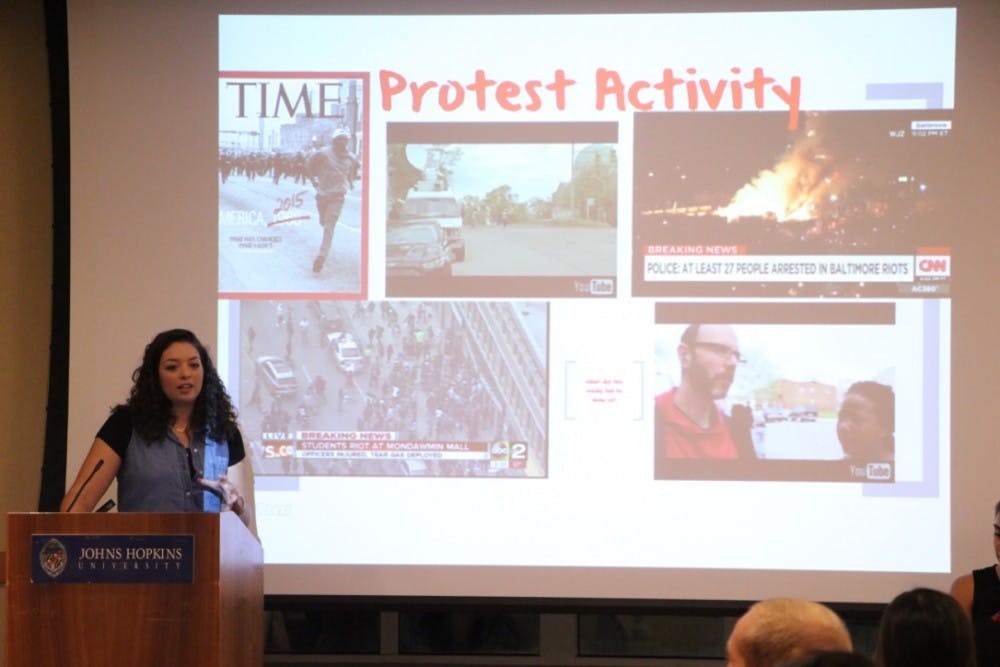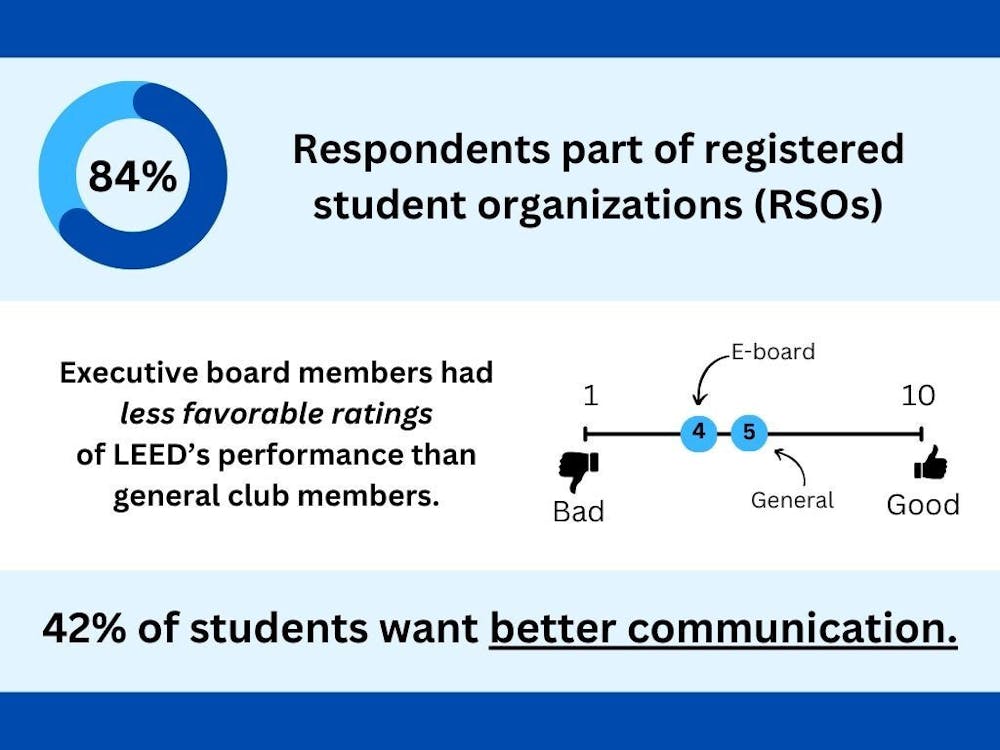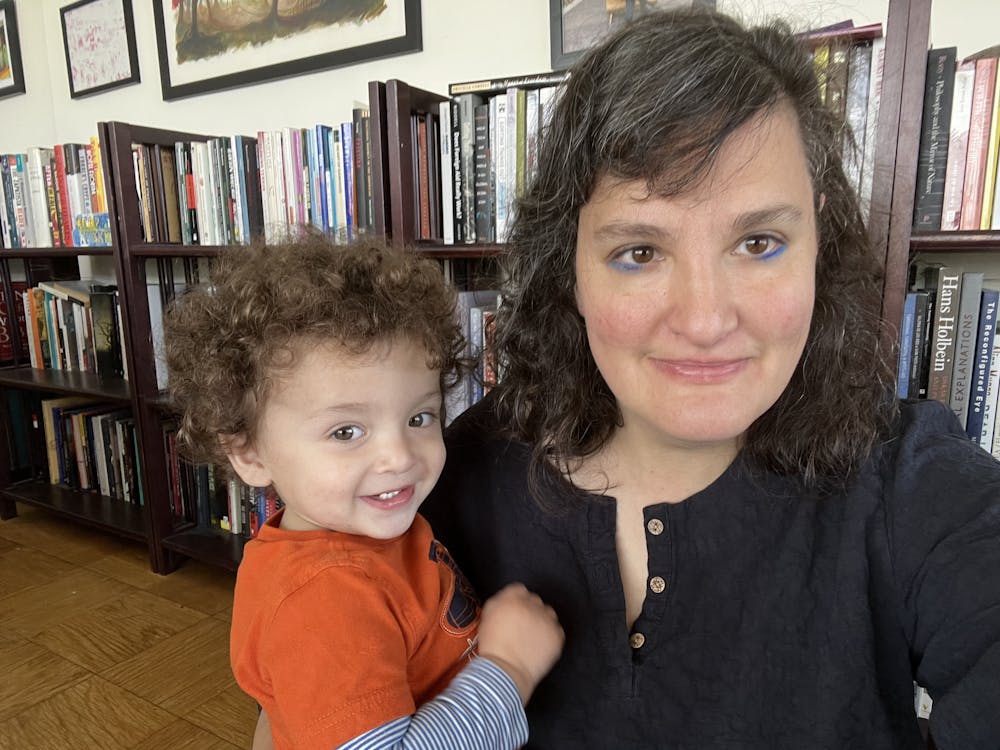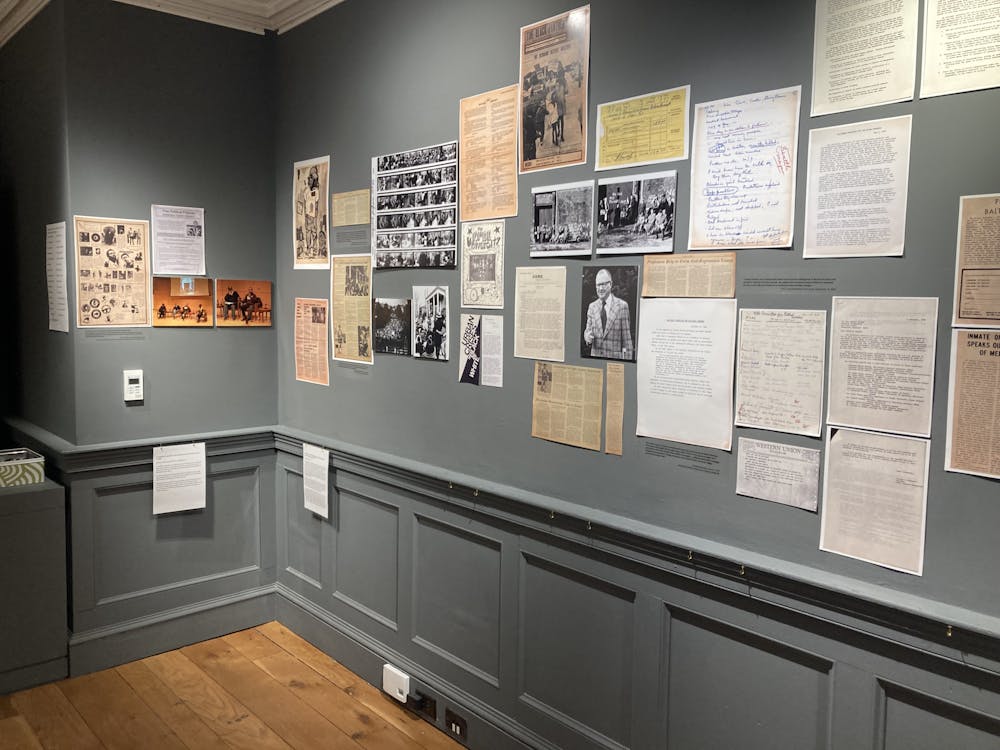By PETER JI For The News-Letter
A panel of four Hopkins community members and a Baltimore native convened Wednesday evening in Charles Commons Salon C to discuss their interactions with young Baltimore city residents. They also offered insight about social conditions in impoverished neighborhoods of West Baltimore.
The four Hopkins panelists were from the Social Policy Minor program and included seniors Juliana Wittmann, Geena St. Andrew and Lauren Abrahams and research assistant Kaitlin Edin-Nelson. Trinard Sharpe was the Baltimore native who spoke.
Using the April arrest and death of Freddie Gray as a launching point, they spoke about how their observations during the study completed over the summer contributed to their understanding of the lead-up to the unrest.
The extensive project, dubbed the Uprising Project or Hearing Their Voices Project, was conducted by the panelists and four high school students who interviewed about 60 young people from socially disadvantaged backgrounds.
”It was not only to talk to people but see what they were seeing and have them teach us,” St. Andrews said. “We were trained to do in-depth interviews. We always started with the question, ‘Tell us the story of your life.’ In addition, we asked what it was like growing up in your neighborhood, what schools they attended and if they moved around a lot, and what they thought about the police.”
The speakers also aimed to correct misconceptions about the Baltimore uprising that stemmed from the few days of rioting, which was more extensively reported by national news sources.
In contrast, Abrahams negated the perception that poor communities actively engaged in looting and violence during the uprising.
“Respondents said that they wanted their kids home safe. Many were not in support of looting and robbing because they thought that it put their communities in a further disadvantage,” she said.
Abrahams had conducted door-to-door interviews with adults living in extreme poverty in one of the poorest neighborhoods of Baltimore, Upton.
She discussed the overlooked challenges that continue to plague Upton, where the average daily budget is $9.32 per person.
Individuals in the Baltimore Uprising study said that despite the poverty they faced, many still held a sense of pride about the city and what its future could bring. In doing their research, the panelists expressed hope that they could better inform future social policies that can target poverty in West Baltimore.
“Youth said they want more rec centers and things to do — that life was boring, and they needed more job opportunities.
While people generally express that they love it, some said they want to leave it as well,” Edin-Nelson said.
Sharpe, a native of Baltimore and recent high school graduate, spoke to the audience and shared his first-hand perspective of the differences that divide Baltimore and also the hope that unifies it.
“I hope you can take this opportunity to sit and learn more... There’s a lot of creativity here, there’s a lot of people willing to achieve more, but we can’t get it,” he said. “I was locked up for an incident that is so ridiculous that I don’t even want to talk about it. I spit on the tracks at the Light Rail, they arrested me, took my cane away, and they locked me up.”
Sharpe spoke about how Baltimore residents view their city.
“People want better for themselves in the city. We don’t want to live here, but we do. We call it the tale of two cities... But, in other senses, many have hope and some got no hope,” he said. “We don’t have as much resources in our communities. When the riots happened, they took the opportunity.”
The four Hopkins panelists also provided insight on how they presented themselves to people during their interviews around West Baltimore.
“I think for the most part most people did not have a freak out, but every now and then, with our medical history... one of the things that we had to be really cautious about was how we presented ourselves,” Wittmann said.
Attendee Sidnei Mccrea worked at the Franciscan Center, a local social services organization, and noted the great amount of need she has seen in the city.
“There’s a lot of people coming in who don’t have food, who don’t have a place to stay, so the candle is being lit from both ends. You can’t just throw jobs at people or say ‘Read a book.’ It goes much deeper than that. It’s a cycle and a type of culture,” she said.
Edin-Nelson emphasized the importance of Hopkins students escaping “the Hopkins bubble.”
“Don’t let the Hopkins name on your back keep you from interacting with your city,” Edin-Nelson said.
Many, still reeling from the effects of the unrest, continue to face fewer open shops, after-school activities and community centers. This fact was repeated by those interviewed in the Baltimore Uprising project and in Abrahams’ survey on extreme poverty.
“Get the narrative out so we can better understand what to change,” St. Andrews said.

















Please note All comments are eligible for publication in The News-Letter.